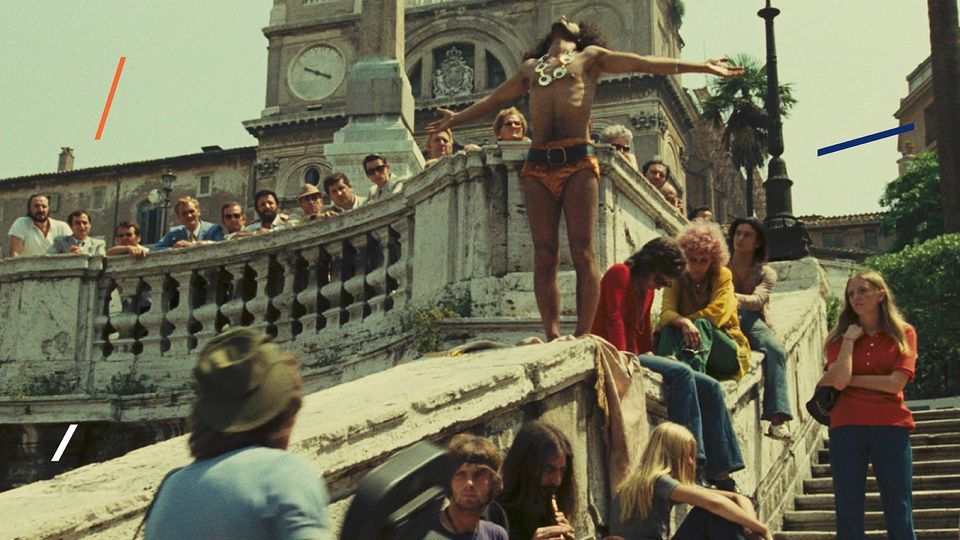
Advertisement
Fellini szívesen építkezik töredékekből. Elegánsabban fogalmazva: történetfüzéreket alkot lazán kapcsolódó elemekből. Egy kis múlt, egy kis jelen, egy kis régmúlt, egy kis önéletírás, darabka igazi emlék, majd egy szép kihízott, kreált emlék - és a végén összeáll valami mulattató, egyben torokszorító egésszé. Rendszerbe szedett csapongás, amely pontos és szenvedélyes képe helyeknek, koroknak, valóságnak és emlékeknek. Fellini Rómája múlhatatlanul fontos kézikönyv az olasz kultúra, történelem és identitás megértéséhez, átéléséhez.Emlékezzünk csak Az édes életre! Egységesnek tűnik, noha epizódok sorozata, amelyeket a főhős, Marcello személye kapcsol össze. De a 8 és félnek, a Satyriconnak, az Amarcordnak sincs igazi nagy dramaturgiája. Ez alkalommal Fellini nem is törekszik arra, hogy egységes szövetnek mutassa a patchworköt. Belejátszottak ebbe a produkció létrejöttének amúgy megszokott bonyodalmai is, de a film végére, amikor a motorosok kidübörögnek Rómából, megértjük, hogy ezek a foltok erős fonállal varrattak össze. Korabeli kritikusai között voltak, akik egyenesen költeménynek tekintették, de olyanok is, akik rosszul viselték, hogy a klasszikusan értelmezett játékfilmi elemek valós személyekkel készült interjúkkal, áldokumentumokkal keverednek. Ráadásul ezek olykor egymásba tolódnak. De hát ezek mind Róma rétegei. Az antik Róma maradványai összecsúsznak a dicső múlt értelmezéseivel, a dicső múlt a Duce kultuszával, hogy egyszerre csak Fellini jelenében találjuk magukat, ahol tisztes urak visszasírják a múltat, miközben rezzenéstelenül szemlélik a hippiket gumibotozó rendőröket. És folytonosan át-átcsusszanunk újabb rétegekbe. A film végén a szürreális papi divatbemutató már belelóg a jövőbe, noha a múltból, az emlékekből indul, hogy aztán Nino Rota zenéjére haláltánccá váljék. Nem lesz semmi szétszálazni…
Olasz nyelven, magyar felirattal.
A vetítést megelőző és az azt követő beszélgetés magyar nyelven zajlik.
//
Fellini was happy to build from various different fragments. To put it more elegantly, he was capable of using loosely tied elements to create the thread of a story. A bit of the past, a bit of the present, a bit of history, a bit of autobiography, pieces of true memories, then a large chunk of fabricated memory. In the end, you are left with a whole that is at once amusing and produces a lump in your throat. A flighty yet ordered process that produces a precise and passionate image of places, eras, reality and memory. Fellini's Rome is an indispensable handbook for understanding and empathising with the culture, history and identity of Italy.
Just think back to La Dolce Vita! It feels like a united series of episodes held together by the personality of the protagonist Marcello. Though none of 8½, Satyricon and Amarcord is truly a work of dramaturgy either. On this occasion, Fellini doesn't even try to present this patchwork film as a united whole. He also integrates his usual complexities into the production, yet at the end of the film, when the motorcycle riders rumble into Rome, we understand that these patches are knitted together with a strong thread. While some contemporary critics saw it as straight-up poetry, others reacted against the fact that classic cinematic scenes were mixed with interviews and pseudo-documentary footage. Moreover, these often blend into each other. But hey, these are all layers of Rome. The remains of ancient Rome merge in with interpretations of the glorious past, and the glorious past merges the cult of Il Duce, until we suddenly find ourselves in a Fellini scene where honourable gentlemen hark back to the past as jackbooted policemen impassively observe the hippies. And we continually move from one of these layers to another. At the end of the film, a surreal priestly fashion show brings us into the future, spurred by the past and by memories, before then falling into the funereal dance of Nino Rota's music. Deconstructing this film is no easy matter...
In Italian, with Hungarian subtitles.
The discussions before and after the screening are conducted in Hungarian.
///
A Müpa social media házirendje:
https://www.mupa.hu/kozossegi-mediafeluleteinkre-vonatkozo-szabalyok
https://www.mupa.hu/en/social-media-policies
Advertisement
Event Venue & Nearby Stays
Müpa Budapest, Komor Marcell utca 1., Budapest, Hungary
Tickets
